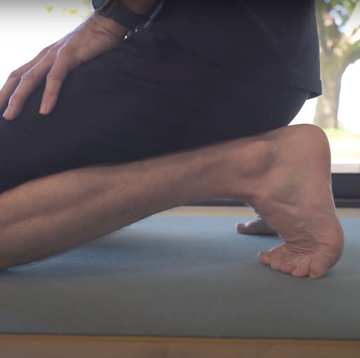Symptoms
You cannot fail to notice a swelling which develops behind the knee and probably prevents full bending and straightening. The pressure causes aching and tenderness, worse after training, and sometimes the area feels hot, or inflamed.
Signs
Comparing the back of one knee with the other demonstrates obvious clinical signs and your doctor will probably discover a decreased range of movement. Baker’s cysts are sometimes secondary to other disease, so he will also look for rheumatoid or osteoarthritis in the knee and other joints, ascertain how far down into the calf the bursa extends, and possibly be able to detect fluid in the knee joint with which the cyst is connected.
Medical investigations
The best way to confirm the diagnosis is to inject the bursa with a contrast medium and x-ray it. This shows the connection with the knee joint and the extent of the cyst.
Dr Patrick Milroy?
Other bursae can form behind the insertion of the hamstring muscles and care must be taken to be sure that the swelling is not that of an arterial aneurysm which, in theory, could burst.
Self-treatment
Advertisement - Continue Reading Below RICE, How to prevent and treat achilles tendonitis.
Medical treatment
Any joint disease or degeneration will need appropriate treatment, but surgical removal of the bursa is not commonly needed. If the bursa bursts, calf pain far exceeds that which one would expect, and rest and strong painkillers, with physiotherapy to mobilise the stiffened limb are invariably necessary.
How to prevent and treat achilles tendonitis
Although the swelling may take months to resolve, some running is probably possible, but always bear in mind the risk of rupture of the sac of the bursa.













